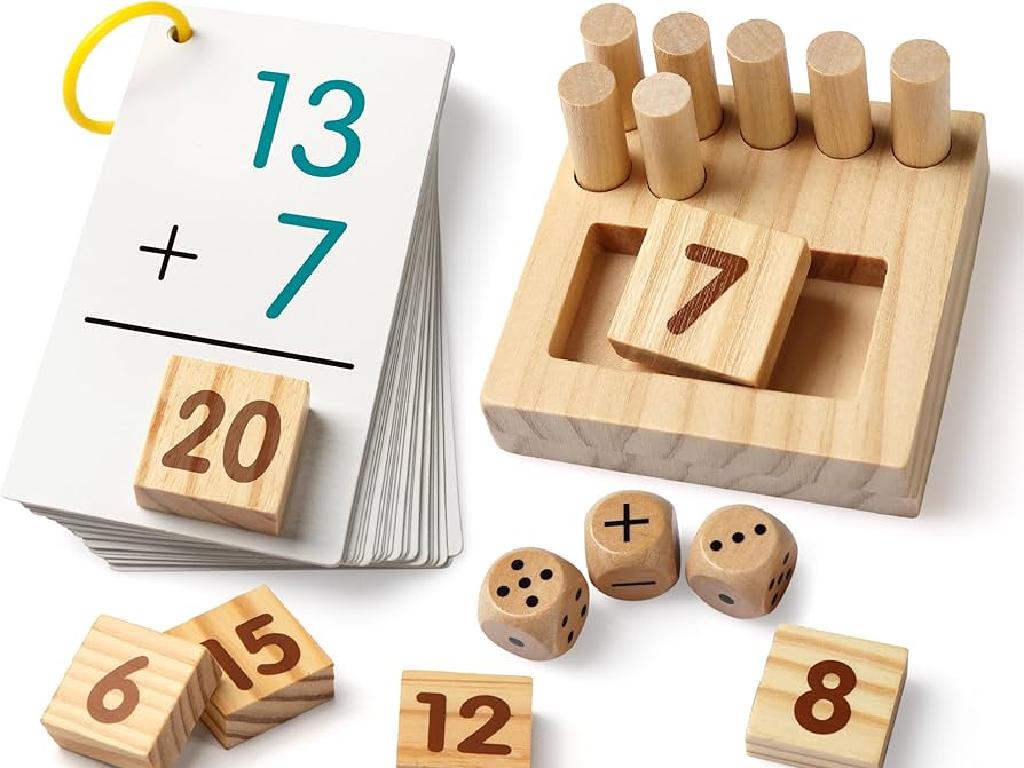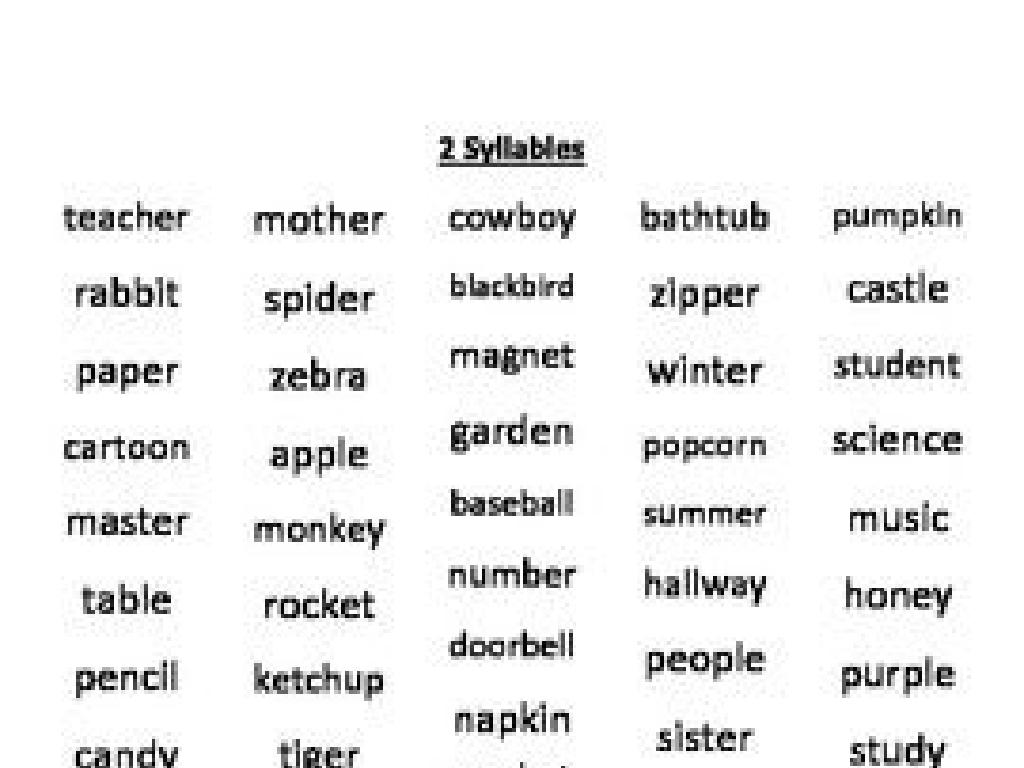Identify The Subject Of A Sentence
Subject: Language arts
Grade: Second grade
Topic: Sentences, Fragments, And Run-Ons
Please LOG IN to download the presentation. Access is available to registered users only.
View More Content
Today’s Adventure: Discovering Sentence Subjects!
– Sentences are like puzzles
– Every sentence has parts
– The subject is who or what
– The subject is the main focus of the sentence, like ‘The cat’ in ‘The cat ran.’
– Let’s find the subject!
– We’ll practice spotting the subject in sentences together.
|
This slide introduces the concept of sentence structure to second graders, focusing on identifying the subject. Begin by comparing sentences to puzzles that need all the right pieces to be complete. Explain that every sentence has different parts, just like a puzzle has different pieces. Emphasize that the subject of a sentence is the person, place, thing, or idea that the sentence is about. Use simple examples to illustrate this point. Prepare to engage the class with practice exercises where they will identify the subject in various sentences. The goal is to make them comfortable with this concept through repetition and reinforcement.
Understanding Sentences
– What is a sentence?
– A sentence shares a complete idea.
– Main parts: subject and predicate
– Every sentence has a subject and a predicate.
– The subject: ‘who’ or ‘what’
– The subject is the main focus of the sentence.
– Finding the subject in sentences
– Let’s practice spotting the subject!
|
This slide introduces the basic concept of a sentence to second-grade students. Begin by explaining that a sentence is like a complete thought, something that makes sense on its own. It’s important to convey that every sentence needs a subject and a predicate; the subject is who or what we are talking about, and the predicate tells us what the subject is doing. Use simple and relatable examples to illustrate the subject, such as ‘The cat (subject) is sleeping (predicate).’ Encourage students to identify subjects in familiar sentences and reinforce the idea that the subject can be a person, place, thing, or idea. This will lay the groundwork for understanding sentence structure and eventually writing their own sentences.
Meet the Subject
– Subject: noun or pronoun
– It’s who or what the sentence is about.
– Does or is something
– The subject is the ‘doer’ of the action.
– Example: ‘The cat slept.’
– ‘The cat’ is what the sentence is about.
– Example: ‘She runs fast.’
– ‘She’ is the one doing the running.
|
This slide introduces the concept of the subject in a sentence, which is fundamental for understanding sentence structure. The subject is typically a noun or pronoun that represents the main focus of the sentence. It’s the ‘who’ or ‘what’ that is either doing the action or being described. Use simple, clear examples that second graders can relate to, such as actions of animals or people. Encourage students to identify the subject in sentences by looking for the noun or pronoun that is doing or being something. Practice with additional examples and have students highlight or underline the subjects in sample sentences to reinforce the concept.
Finding the Subject in a Sentence
– First, locate the verb in the sentence
– Ask ‘Who or what is doing or being?’
– Practice with an example sentence
– ‘The flowers in the garden are blooming.’ – What is blooming?
– Identify the subject together
– Let’s find out what ‘blooming’ refers to here
|
This slide is aimed at teaching second graders how to identify the subject of a sentence. Start by explaining that the verb is the action word or the word that tells us what is happening. Then, to find the subject, we ask who or what is doing the action or being described. Use the example sentence ‘The flowers in the garden are blooming.’ to illustrate this concept. Ask the students what is doing the action of blooming to guide them towards identifying ‘The flowers’ as the subject. Encourage the students to practice this technique with other sentences and provide guidance as needed. This activity will help build their understanding of sentence structure and improve their reading comprehension skills.
Let’s Practice Together: Finding the Subject
– I’ll show sentences to find subjects
– First, let’s find the verb
– The verb is the action word in the sentence
– Example: ‘The dog barked loudly.’
– ‘Barked’ is the verb, so what did the action?
– Ask: ‘Who barked loudly?’
– ‘The dog’ is the subject doing the barking
|
This slide is designed for a class activity to practice identifying the subject in a sentence. Start by explaining that the subject is the person, place, thing, or idea that is ‘doing’ the verb in the sentence. Encourage students to first locate the verb, as it will often help them find the subject. Use the example provided to illustrate how to ask the right question to find the subject. For instance, in the sentence ‘The dog barked loudly,’ ask the students ‘Who barked loudly?’ to guide them to the answer, ‘The dog.’ Prepare additional sentences for practice and consider pairing students to work together for collaborative learning. Have a few students share their sentences and subjects with the class to reinforce the concept.
Your Turn: Finding the Subject
– Find subjects in sentences
– Work with a partner
– Two heads are better than one!
– Share your answers
– Discuss what you think the subject is
– Have fun discovering!
– Learning is fun when we explore together
|
This slide is an interactive class activity designed to reinforce the concept of identifying the subject in a sentence. Students are encouraged to work in pairs to foster collaboration and discussion, which can lead to a deeper understanding of the material. As they work through the sentences, they should look for the person, place, thing, or idea that the sentence is about. After identifying the subjects, each pair will have the opportunity to share their findings with the class, allowing for peer learning. The teacher should circulate the room, providing guidance and support as needed. Possible activities include: 1) Matching subjects to pictures, 2) Underlining subjects in sentence strips, 3) Creating sentences and swapping with partners to identify subjects, 4) Drawing subjects from a story read in class, 5) Using flashcards with sentences and having students identify the subject.
Class Activity: Subject Hunt
– Let’s hunt for subjects in class!
– Find objects or pictures
– Look around the room for any item or image
– Create sentences with subjects
– Use the item as the subject of a new sentence
– Share your sentences with everyone
– Practice speaking skills by presenting
|
This interactive activity is designed to help students identify the subject of a sentence by using tangible items in the classroom. Encourage the children to walk around the room and choose any object or picture they like. Once they have their subject, guide them to construct a simple sentence where their chosen item is the subject. For example, ‘The globe is round’ or ‘The picture is colorful.’ After creating their sentences, each student will present to the class, reinforcing their understanding of subjects and boosting their confidence in public speaking. As a teacher, provide feedback and ensure each student understands why the chosen word is the subject of their sentence.
Great Work on Subjects!
– Congrats on learning subjects!
– Homework: Write 5 sentences
– Create sentences about your day or favorite animals
– Circle the subjects in each
– Use a colored pencil to circle the subjects
– Recall: Subjects tell us ‘who’ or ‘what’
– Subjects are often a noun or pronoun
|
Today’s lesson focused on identifying the subject of a sentence, which is a crucial part of understanding sentence structure. For homework, students are tasked with writing five sentences on any topic they choose. This exercise will help reinforce their ability to recognize the subject in a sentence. Remind them that the subject is typically the ‘who’ or ‘what’ the sentence is about and is usually a noun or pronoun. Encourage creativity in their sentence formation and remind them to use a colored pencil to circle the subjects for easy identification. In the next class, we can review some of the sentences together to ensure understanding.





